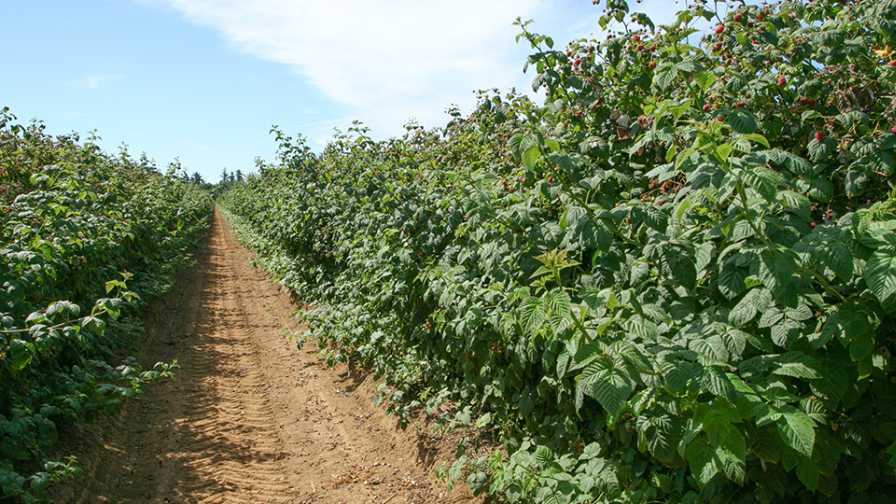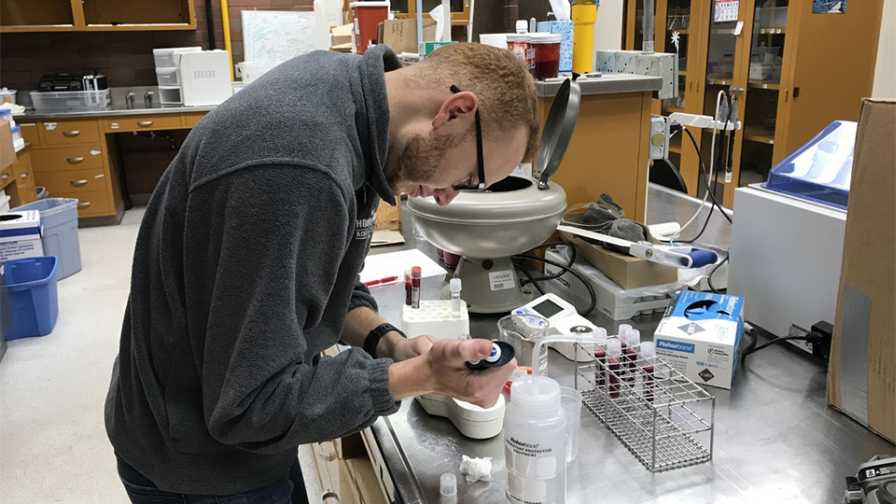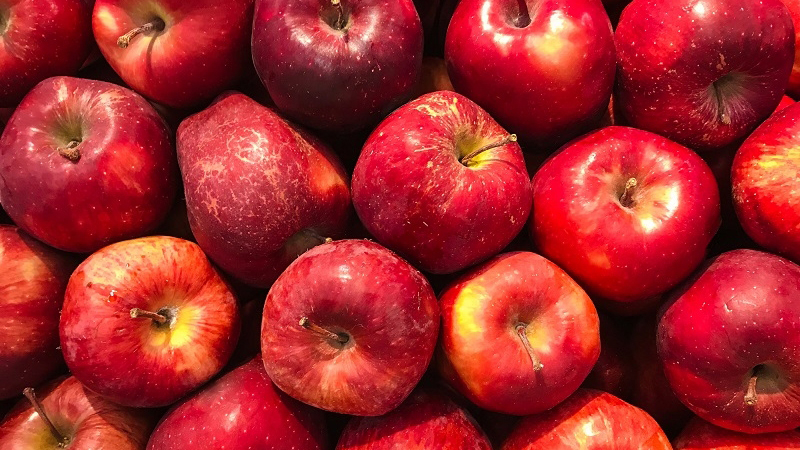Pulsed-Drip Irrigation Progress for Raspberries

Researchers in the Pacific Northwest are trying to determine whether pulsed-drip irrigation applications are beneficial in red raspberry. This is the study site in Lynden, WA. Photo by David Bryla
Berry associations in Washington state, after kicking the tires on the prospect of pulsed-drip irrigation, may have gotten the answer they are looking for.
According to research conducted in the Pacific Northwest, pulsed-drip irrigation appears to be a promising method for improving the production of red raspberries. Further work is needed to evaluate the practice in different soil types, researchers say, but until then the news bodes well for berry growers.
“We are excited about the results of the study and are hoping that pulsed-drip irrigation can help Washington berry growers improve production on their farms and increase their profits,” David Bryla, a Research Horticulturist with the USDA-ARS in Corvallis, OR, says.
Pulsed-drip irrigation is the practice of applying water in a series of small intervals each day until the total amount of water required by the crop has been added. When managed properly, pulsing can reduce deep percolation and runoff while supplying water and nutrients at an optimum rate for plant uptake. This increases growth and production relative to applying the same amount of water in a single continuous application.
“The goal of this practice is to irrigate frequently, multiple times a day, until the total amount of water required by the crop has been applied,” Bryla says.
The Washington Blueberry and Red Raspberry commissions have verbalized interest in using pulsed-drip irrigation to increase yield and fruit quality. However, they have questioned whether the practice is practical. Providing that answer are Oregon State University Ph.D. student Jesse Carroll, USDA colleagues Scott Orr and Bryla, and Washington State University researchers Chris Benedict, Lisa DeVetter, and Troy Peters.

Jesse Carroll, an Oregon State University Ph.D. student, measures fruit quality in raspberries.
Photo by David Bryla
“We assessed the feasibility of using pulsed-drip irrigation to increase water-use efficiency in berry crops and protect the quality of regional water resources,” Bryla says.
The researchers conducted a trial at a commercial site in Lynden, WA, in a well-established field of ‘Wakefield’ raspberry. Soil at the site was a sandy loam. Their objective was to determine whether pulsed-water applications by drip are beneficial in red raspberry.
“The practice is usually most effective in sandy soils but could also have benefits in other soil types,” Bryla says.
Treatments were applied for two growing seasons (2018-2019) and included pulsed and standard continuous irrigation. In both cases, irrigation was applied using a single lateral of drip tape per row. The tape had one-quart-per-hour emitters every 20 inches and was suspended from a trellis wire in the middle of the row at about a foot above the soil surface.
Pulsing was programmed to operate for 30 minutes every two hours, up to eight times per day, as needed, while continuous irrigation was applied once a day for up to four hours using approximately the same amount of water as applied in the pulsed treatment.
Fruit were machine-harvested every few days over a period of six weeks (July and August) and analyzed for yield and fruit quality. Remote images also were collected periodically using an unmanned aerial system and analyzed for changes in canopy cover.
Pulsed-drip increased soil water availability relative to conventional irrigation and, by the second year, increased total production by 7%, or 1,100 pounds of fruit per acre.
Based on recent market prices for processed raspberries (2015-2019), the increase in production with pulsed drip was equivalent to about $995 per acre. Much of this increase occurred during the latter three weeks of the harvest season and was primarily due to larger fruit size with pulsed-drip. Pulsed-drip also increased canopy cover by nearly 12% by the end of the second year but resulted in slightly less sugar and a bit more acidity in the berries on several harvest dates.
“We will continue to work on the project this summer and will present the final results at industry meetings this winter,” Bryla says. “We are also investigating the use of pulsed-drip in blueberry, which looks promising, too.”
Bryla will present the study at the Annual American Society for Horticultural Science Conference in Orlando scheduled for August. The decision whether to conduct that event on site or online had yet to be made as of this posting.










